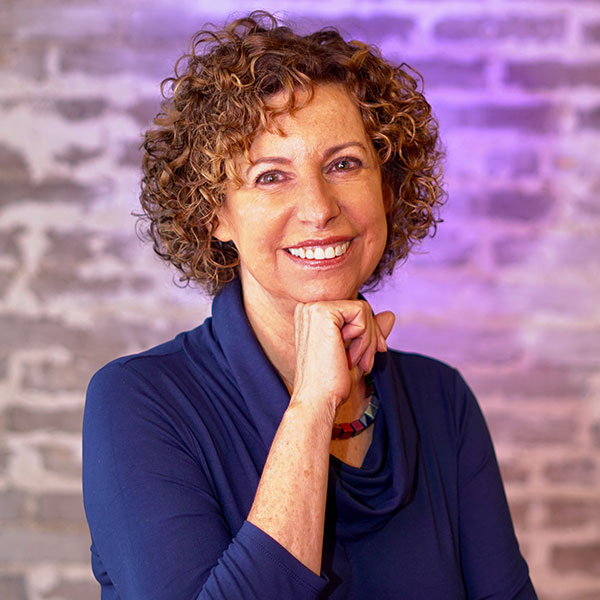Jacqueline Grennon Brooks is co-author with Martin G. Brooks of Schools Reimagined: Unifying the Science of Learning With the Art of Teaching and professor emerita in the Department of Teaching, Literacy & Leadership at Hofstra University.
I practice yin yoga to strengthen my connective tissue, use breathing to relax my muscles, and try to work with my head positioned over my spine. But I still get headaches, even with all of these stress reduction moves to keep my body aligned and my mind focused. A couple of times per year I go to Dr. S who manually mobilizes my neck muscles with a technique most often used with high level athletes, a group for which I definitely do not qualify. Most of his other patients are going for the gold. I am trying to relieve my headache. It works. While Dr. S manipulates the soft tissues of my neck, a somewhat painful process, he asks questions to distract me from the pain. At our last session he asked what I thought about virtual learning, which launched a conversation about student engagement and how people learn.
I talked about learning as a process greatly influenced by interest, and then Dr. S steered the conversation to his relationship with the dreaded Krebs cycle. He said that he learned it 6 times and forgot it 7 times. He shared with me that he doesn’t and never did care about it. But his success in helping athletes optimize their athletic performance told me something different.
The Krebs cycle explains how food gets broken down chemically in the body to release energy that fuels the body’s activities. I knew that Dr. S helps athletes optimize their Krebs cycles (without using the term) by analyzing the nutrient ratios in their diets. He helps them understand what happens in their bodies after a lunch of hamburgers, fries, and soda or a dinner of salmon with pumpkin seeds and kombucha tea. But, to him, the Krebs cycle is the long sequence of detailed chemical reactions occurring inside the mitochondria, inside the nucleus, inside the cells, inside the tissues, inside the organs, inside aerobic organisms. It’s a diagram in a book, a long way from his world of sports training. This well-respected professional who supports a long list of competitive athletes didn’t have teachers who helped him see a contextual whole of the Krebs cycle before introducing its parts. The Krebs cycle is an essential explanatory model of why Dr. S’s practices work, but, for him, it remains somebody else’s diagram in a book he no longer owns.
We need to reimagine schools. Schools that offer standardized curriculum with standardized practices don’t always nurture students’ passions. Maybe more accurately, they rarely do. Dr. S was flummoxed when I advocated that schools develop students’ passions and help them pursue their dreams. “Are you saying that schools shouldn’t be standardized?” I had a quick “yes.” Some students, like Dr. S, find personal, career, and lifestyle success from standardized schooling. They can dismiss the Krebs cycle as arcane and still continue in the academic strand of their choice. They have privilege of all sorts on their side. Some students from marginalized communities with economic hardships also build success after standardized schooling. They develop resiliency without privilege. But too many don’t. Way too many. Everyone has a dream. Everyone deserves the chance to work at enacting it.
Reimagined schools guide students in aligning their dreams and behaviors. They scaffold student inquiries across a full range of self-selected topics (racial justice, climate change, agribusiness, photography, polar bears, motorcycles, for example) to foster greater capacities across a full range of thinking (seeing patterns, analyzing cause and effect, recognizing proportionality, understandings systems, a few of many.) These schools require teachers who lead with open minds and open hearts and who continually refine their understandings of the science of learning. Schools Reimagined illustrates teachers doing just that. It describes how teachers use their emerging understandings of how students construct knowledge to transform their classrooms so that students can build their lives.
Let’s end with the last line from part I of Mary Oliver’s poem, Evidence: “Keep some room in your heart for the unimaginable.” Some people think that schools that help student do their dreams is unimaginable. It is not. We can do this.
Photo Credit: Jacqueline Grennon Brooks


Comments
Bravo! Accurate and perfect.
Love it. I’m using this in class with secondary science student teachers. It will be a fabulous conversation!!!
Love this, I think every teacher needs to be a dream catcher.
I am proud to say that you, Françoise, are indeed a dream
catching teacher and a visionary school leader!
The thought(s) that come to my mind: What you are essentially saying is that a ‘non-stadardized’ education experience would have provided Dr.S with the opportunity of a more complete understanding of ‘the conceptual whole of’ Krebs cycles- and its associated ‘parts’- how, why and when. Then, is ‘standardized’ education perhaps robbing or inhibiting the learner
to dream and construct knowledge? Must ‘dreaming and scaffolding’ be an important component for all learners in a ‘non-standardized’ education? What role does DNA and Environment of the learner play in ‘non-standardized education?’ Or am I missing some thing?